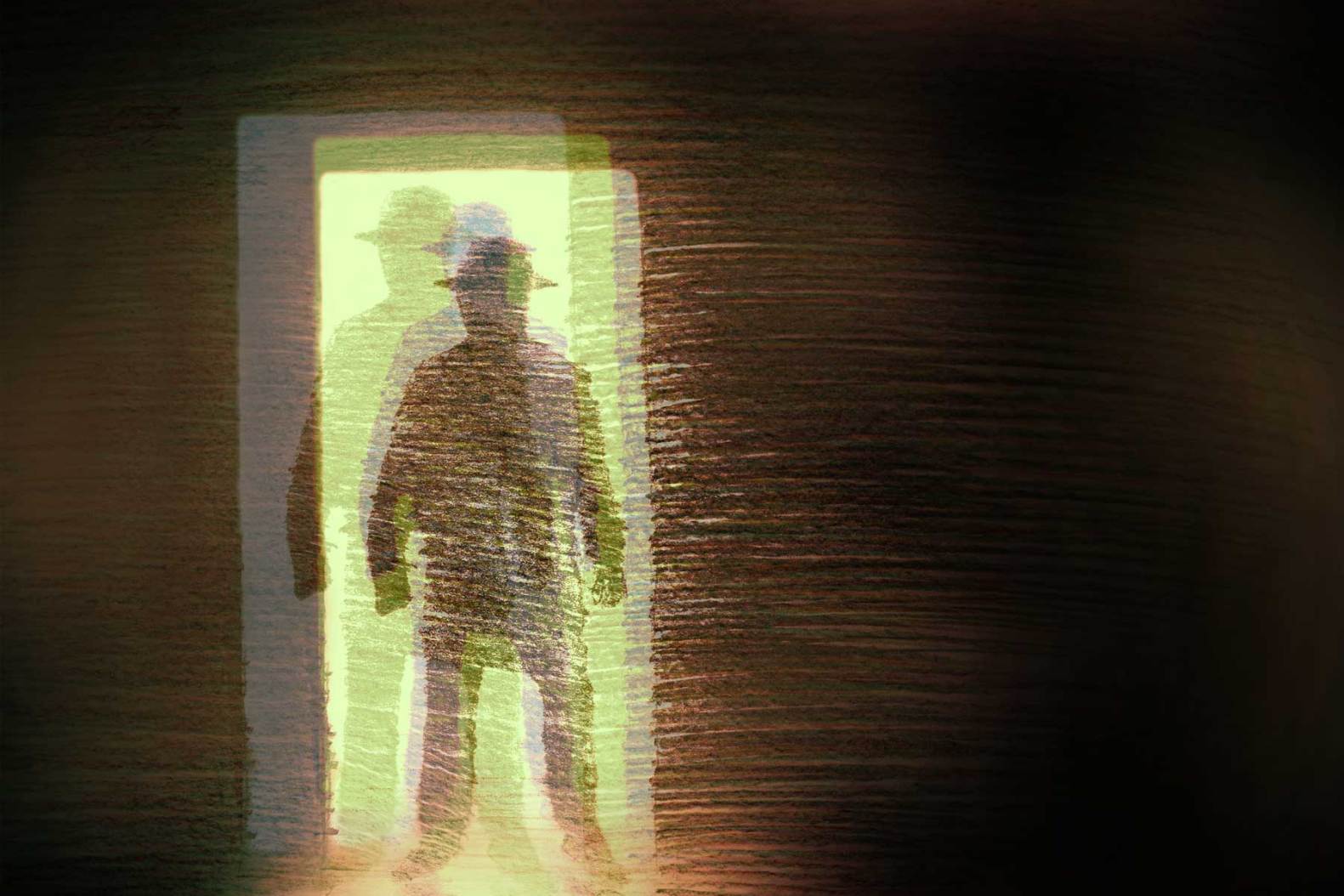
An urban legend that's been plaguing the internet for years is suddenly scarier than ever
The man in the hat hikolaj2/Adobe StockHalloween may be over too, but there's a spooky character to watch out for: the man in the hat.
Since the late 2000s, individuals have been sharing their stories of a strange sight that seems remarkably consistent from story to story. It is the tall figure of a person wearing a wide-brimmed hat, a presence usually seen when lying in bed at night, somewhere between sleep and consciousness.
"What I saw filled me with immediate dread and terror," writes Timothy M. Brown Jr., who since 2008 has hosted a blog that allows anyone to describe his encounter with the man in the hat. sharing her first glimpse of appearing as a teenager. described the 1990s. "The man had no recognizable features. I could see no eyes, nostrils, or mouth, only darkness. He looked like a shadow, only darker - much darker. He had a very tall, wide-brimmed hat and a long trench coat that blew when he moved.
It marked the beginning of the man in the hat's tenure as the legend of Web City, aka "creepypasta", the kind of story that is endlessly repeated and revised until it is firmly entrenched in consciousness. cultural. For years, the svelte man - also tall, faceless and terrifying - was essentially the star of these ghosts, in part because of a shocking 2014 case in which two 12-year-old girls violently stabbed their good friend for appease the fictional character. Recently, however, the man in the hat has become the horror meme of the second.
Besides Brown's blog, a Hat Man subreddit has been running for years. He was the subject of fan art and several YouTube videos, including a 2019 mini-documentary by Quartz that linked him to the biological phenomenon of sleep paralysis.
But on 4chan and elsewhere, the man in the hat is commonly referred to as a hallucination caused by the abuse of diphenhydramine, or DHP, the active ingredient in the over-the-counter allergy drug Benadryl. On forums like Reddit's r/ilovedhp, where users submit "travel reports" after taking harmful amounts of drugs, the Hat Man is downright a joke and a mascot - "I'll try to see the Hat Man and him." . a DPH disciple immediately announced. However, it is believed that any mind-altering substance consumed in excess gives access to the man in the hat, even caffeine.
While many don't take the man in the hat too seriously, instead arguing over owing him money or manifesting him as an imaginary sidekick when you're alone, some TikTok creators have gone the other way, claiming that he is a real one and no doubt evil is. shadow person.
Patrick James, whose films on themes such as UFOs and haunted houses have nearly 300,000 followers, speculated that the man in the hat might be an interdimensional being. Abbey Sobota, whose "scary tales" and interpretations of American folklore reach audiences of more than half a million, says the man in the hat most often appears to children as feeding on their negative emotions, especially those caused by trauma, and acts, a "parasite". A TikTok influencer named MJ Patek has informed his 1.1 million personal followers that they are in 'danger' if they see the man in the hat, saying some have woken up with 'scratches and marks on the body" after his visits.
The trend has gotten so extreme in some corners of the app that some customers have been forced to push back. A response to a chilling Hat Man video, captioned "Did you have a great childhood or was this man in your dreams?" took the position that the Hat Man might be there too, but there's nothing to worry about.
"He's the man in the hat," explained a self-proclaimed "practitioner and instructor of conventional physical witchcraft" who adheres to @witchfoot_official. "He's not dangerous, and it's not just people who had a bad childhood who see him. He's an observer. He's in every culture. He could also be there if you suffer from sleep paralysis or if shadow people come in. But he's definitely not one of them and he won't hurt you."
“So stop scaring kids on this app and teenagers on this app,” she concluded. "Thanks a lot."
The more people get involved in stirring up concern about a man in a hat who can attack you at your most vulnerable point, the more energy the myth gains and the more its threat can be exaggerated. The content is also self-contained as impressionable youngsters who consume it regularly are ready to recognize the man in the hat in their own bedroom. After all this time, what presumably started as a trick of the light processed by the human subconscious is now a dominant figure in all of digital lore, a being who has inspired his own lore and countless testimonies that have recently been fueled by TikTok's fascination with the paranormal and the occult.
So go ahead, enjoy the memes and find out that the man in the hat doesn't exist. It will not change the truth that others choose to believe. Who knows? You might end up popping one too many Benadryl and hitting it.